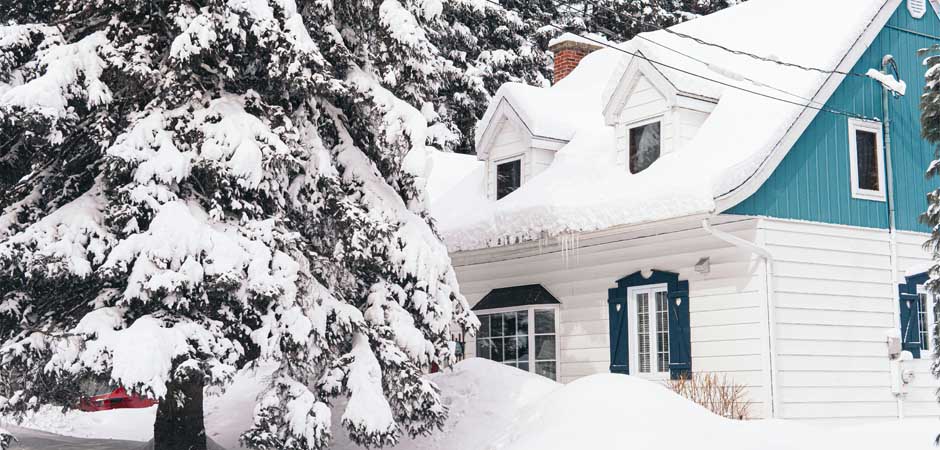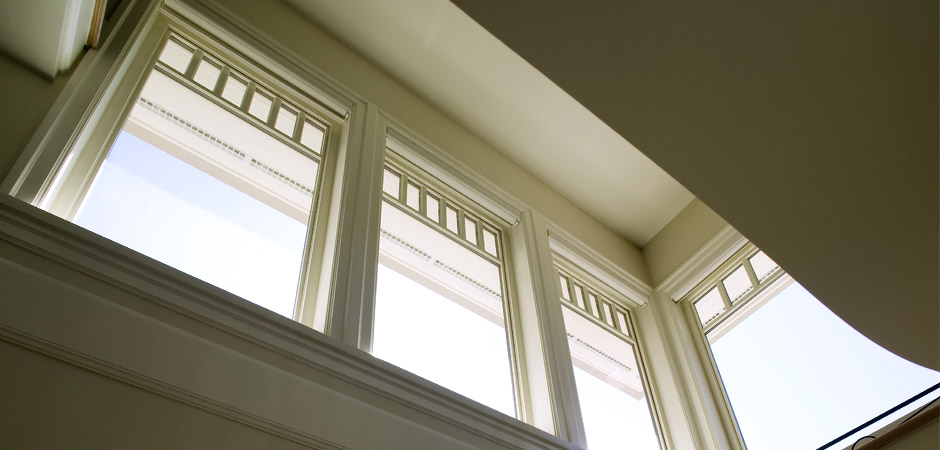Getting your home ready for winter tips are from TQ Founder and Past President, Ralph Belisle
Here’s an overview of indoor and outdoor items to consider for the comfort and safety of you, your loved ones and your home’s overall efficiency during the upcoming colder winter months. Some of these items may be checked out and performed by yourself, while most items are best addressed by a professional.
If you’re uncertain about anything, we suggest speaking with a professional without too much financial commitment to help investigate your concerns.
We believe it’s much better to find a problem early or prevent it from further damage in the moderate temperatures of autumn than discovering a larger complex, costly unavoidable problem on a frigid winter day. Let’s help winterize your home!

OUTDOOR TIPS
AVOID DRAINAGE AND STORM DRAIN FAILURE
Inspect your gutters, sump and drain line.
Water leaves from your home to the municipal street storm drain system.
- Ensure the indoor drain system in your home is clean and clear
- Consider calling a professional with equipment that can clean to clear the pathway and identify breaks, leaking spots and some can have a drainage camera
- Watch out for fallen leaves that wash down from your home’s gutters to the down pipes and drain line – clogged gutters can prevent proper drainage
- When your gutter backs up, that water will overflow and run down your home.
- This water can lead to household leaks, overflow to your basement and deterioration of your home’s exterior and possibly the foundation
- Make sure water is getting moved away from your home.
- Keep your gutters clear of leaves and debris or install a leaf guard gutter system.
- If you have a sump in your front yard, especially an older one, it can get clogged up and return towards the home. Check this out before it’s too late.
INSPECT ROOF AND LEAKS
Checking your own roof is challenging for safety.
- As you’re cleaning your gutters, try to look at your roof and see if there are any visible issues, like missing or damaged shingles.
- If your roof needs attention, call a roofer to help you with the repairs or maintenance.
- Understand that leaks can be anywhere
- Check metal flashings for water
- Check likely places where water can get into the house: openings, wall intersects with roof
- If you notice moss growing, it’s a sign of potential water and water collection
TURN OFF AND DRAIN OUTSIDE FAUCETS
Water left undrained can freeze, which can cause the pipes to burst.
- Shut off the water valve to your outside faucet and let the water drain out of the line
- Disconnect your water hose and drain the remaining water
FROST AND SNOW – PREVENTING SLIPS AND FALLS
Slippery surfaces will occur from frost and snow.
- Walk around the exterior of your home and look for damp areas
- Look for uneven pavers and ice build ups
- Test: with a water hose wet the ground and see where puddles form because this is where ice will also form
- Flag and bring attention to avoid a fall
- Clearing your driveway and walkways regularly because snow can build up and turn into ice.
- Slippery surfaces also indicate underlying mold and ice only makes it worse
- Zinc pellets from building supplies store helps kill moss
- S.P. Trisodium Phosphate Powder from hardware stores can effectively clean surfaces, too
INDOOR TIPS
CHECK HEATING SYSTEM
Ensure your heating system is working properly and efficiently.
- Have your furnace professionally serviced
- Check your electric baseboards are clear of debris and are in good working condition.
- If you have an older thermostat, consider replacing it with a programmable one to save money on heating costs.
CLEAN CHIMNEY AND FIREPLACE
Make sure the chimney and vents are clean and in good condition
- Consider hiring a professional to maintain
- A clean chimney prevents fires and carbon monoxide from building up
LIGHTING
With earlier evenings and darkness, it’s good to have lights on for safety both indoors and outdoors
- Change your light bulbs and consider adding more fixtures and higher capacity bulbs
- Exterior motion sensor lights are economical and eco friendly
- Dirt can build up on exterior lights so clean and make them shine brighter
CHECK WINDOWS AND DOORS FOR LEAKS
Prevent heat loss by making sure your windows and doors are properly sealed.
- Replace any weather-stripping around windows and doorframes
- Check for hard to open windows and doors as a concern especially as exits during an emergency
- It’s better to adjust before it gets too wet /cold as it will swell and freeze up
- Check for drafts and caulk both inside and out where necessary, to keep the heat in and the cold out

DAMPNESS AFFECTS YOUR HOME’S STRUCTURE
Use your senses to identify dampness
- With your nose, you can detect a musty, mold smell, especially in the basement
- Dark grey dots on walls and ceiling surfaces can indicate dampness
- Damp ceilings and walls can also mean the roof is leaking so investigate with a professional and get the issues fixed before winter comes
- Look in to caulking, sealing and flashing with dampness from outside
CHECK SMOKE AND CARBON MONOXIDE DETECTORS
- Test smoke and carbon monoxide detectors are working and have good batteries
- Consider getting carbon monoxide detectors if you don’t have any already
- Consider a HVAC inspection to check if your furnace and water heater are properly vented as it is a source of carbon monoxide.
- Remember to open windows at least a few minutes a day for fresh air circulation and to avoid moisture build up
- Know your electrical panel, especially what works and doesn’t.
- Get familiar enough so you can activate it in an emergency
As always throughout the year, keep flashlights handy and your emergency preparedness kit ready!
Making the effort and time to winter-proof your home is a small price to pay especially if it helps prevent major damages.